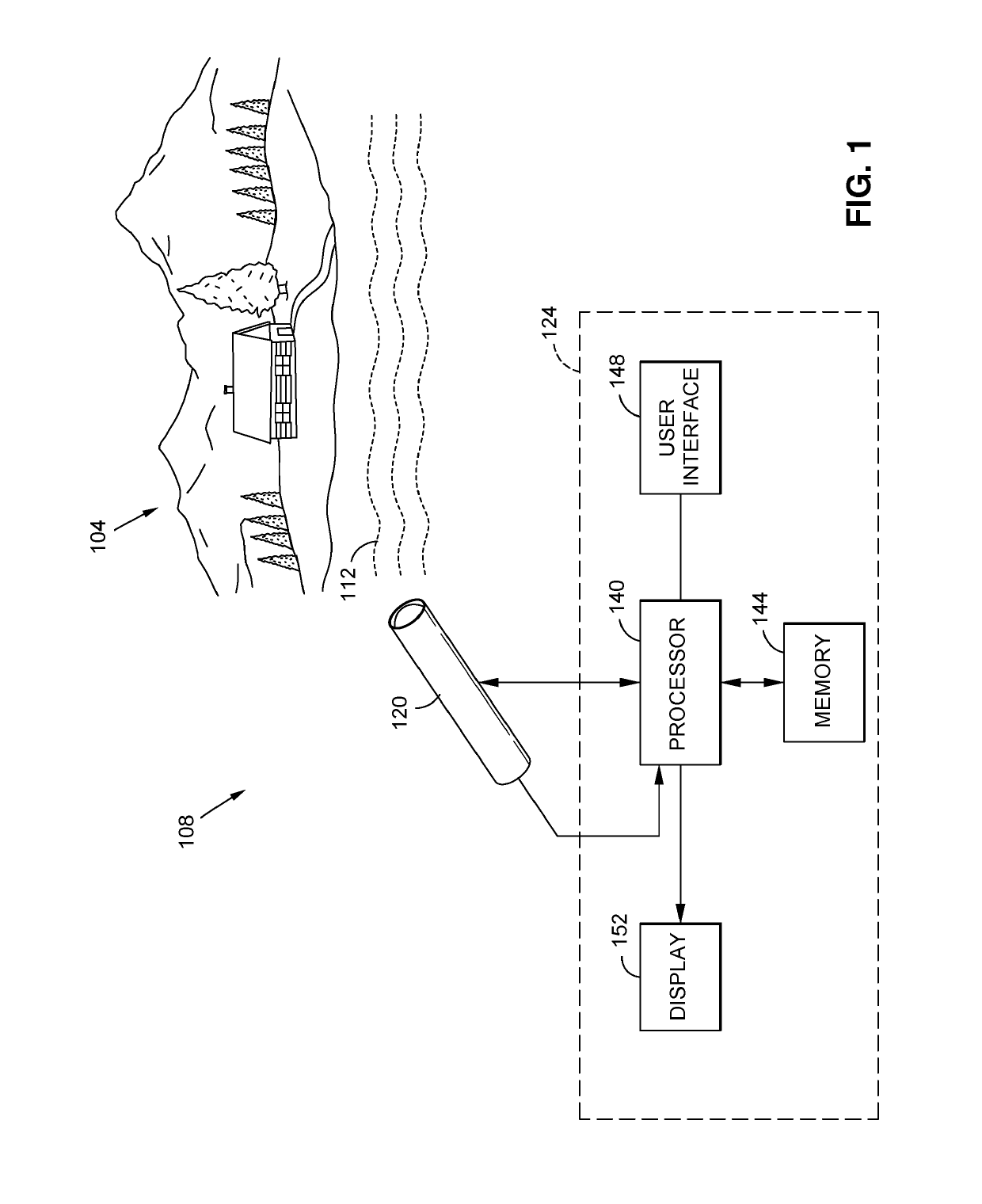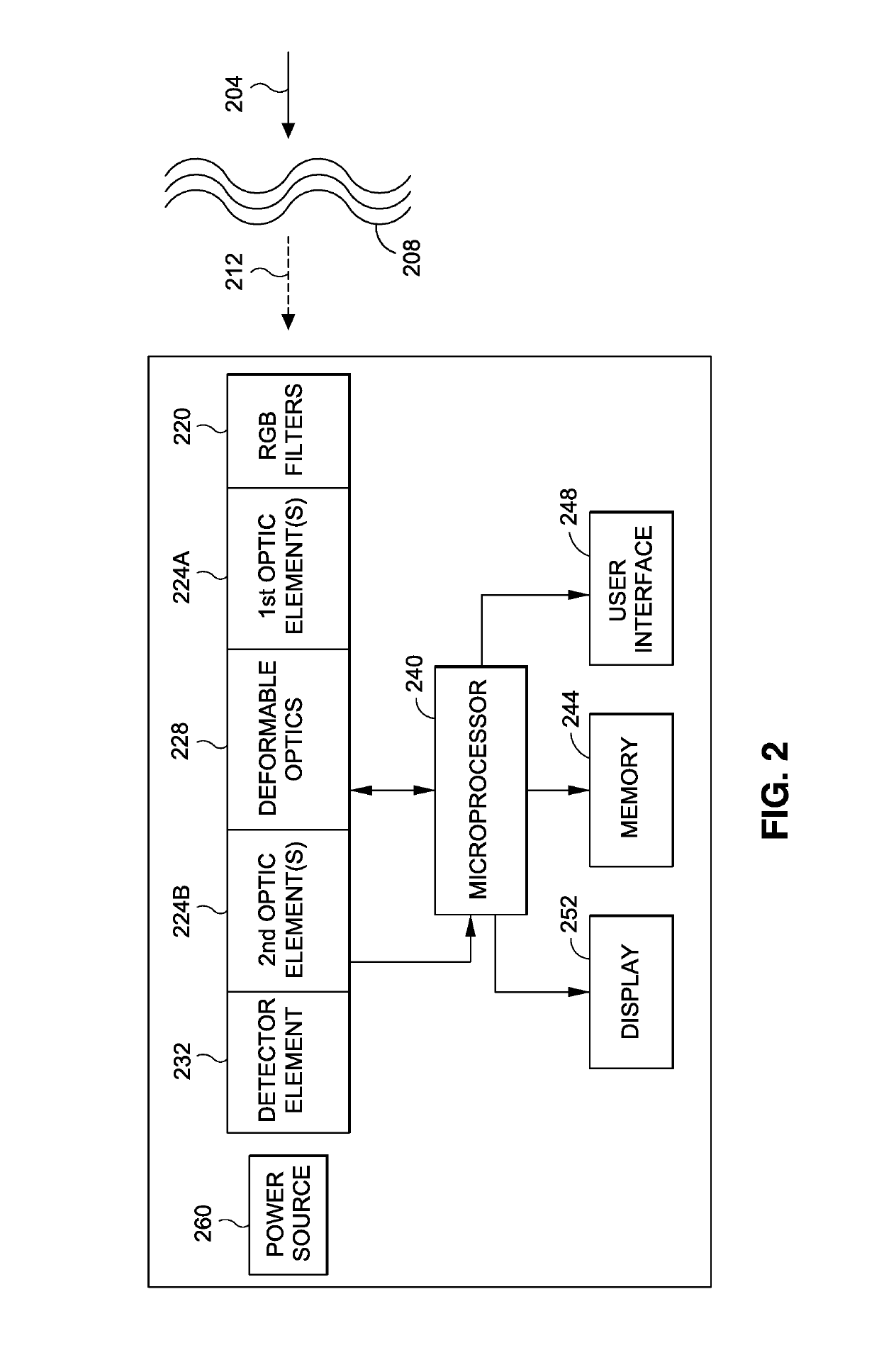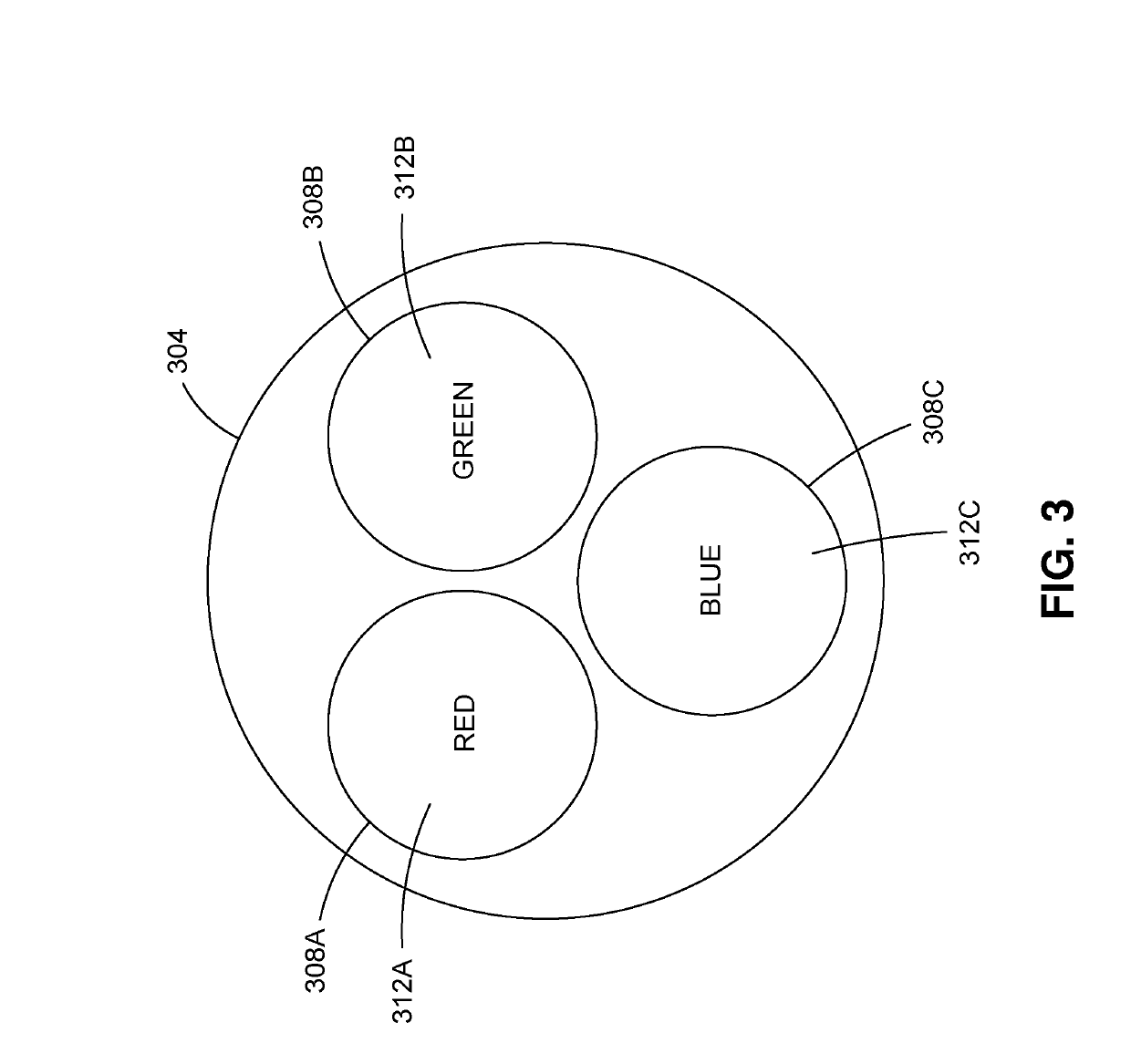RGB wavefront sensor for turbulence mitigation
a wavefront sensor and wavefront technology, applied in the field of optical systems, can solve the problems of poor image improvement algorithm, poor performance of optical remote sensing technology, atmospheric turbulence-induced degradation, etc., and achieve the effect of improving severely degraded images
- Summary
- Abstract
- Description
- Claims
- Application Information
AI Technical Summary
Benefits of technology
Problems solved by technology
Method used
Image
Examples
Embodiment Construction
[0039]FIG. 1 is a block diagram of the innovation in an exemplary environment of use. This is but one possible example environment of use and system. It is contemplated that other embodiments and environments of use are possible. As shown, a distant scene 104 is presented for observation over a generally horizontal path. The reason for observation may vary by application but may range from the following applications: forestry, police, search and rescue, military, surveillance, commercial monitoring, farming, ranching, marine environments, or any other use or environment needing long range imaging of a distant scene.
[0040]Proposed and disclosed is a compact AO system for long-range horizontal paths that improves severely degraded images. Located remote from the scene 104 of interest is an imaging system 108. Between the imaging system 108 and the remote scene 104 is a distance over which turbulence 112 is present. As is understood in the art, turbulence 112 disrupts the light rays re...
PUM
 Login to View More
Login to View More Abstract
Description
Claims
Application Information
 Login to View More
Login to View More - R&D
- Intellectual Property
- Life Sciences
- Materials
- Tech Scout
- Unparalleled Data Quality
- Higher Quality Content
- 60% Fewer Hallucinations
Browse by: Latest US Patents, China's latest patents, Technical Efficacy Thesaurus, Application Domain, Technology Topic, Popular Technical Reports.
© 2025 PatSnap. All rights reserved.Legal|Privacy policy|Modern Slavery Act Transparency Statement|Sitemap|About US| Contact US: help@patsnap.com



